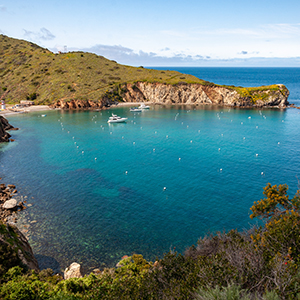 Growing Up in Santa Cruz, June 2021, Teacher’s Desk, “Fuel for the Future and Catalina Island,” by Lisa Catterall.
Growing Up in Santa Cruz, June 2021, Teacher’s Desk, “Fuel for the Future and Catalina Island,” by Lisa Catterall.
In the May 2021 issue of Renewable and Sustainable Energy Reviews, researchers at the USC Wrigley Institute for Environmental Studies, which operates the Wrigley Marine Science Center on Catalina Island, published the results of a study that may move humanity forward in the replacement of fossil fuels. One possible replacement for oil as an energy source is fuel that comes from plant sources. Because matter and energy are always conserved, however, there is a scale issue with trying to slake the thirst of humanity for oil and oil products by growing plants on land. We just can’t sustainably grow or reclaim enough.
The giant kelp that grows in cold, shallow seas such as those along the California coast can grow at a rate of two feet per day in ideal conditions. Kelp is a great candidate for biomass production. Scientists and ecology-minded entrepreneurs wondered if it would be possible to farm it in a sustainable way. One idea was to lower the kelp farm into nutrient-rich water at depth during nighttime hours, as kelp only needs light during the day and shallow water is nutrient-poor.
Mount Madonna School (MMS) tenth grade honors oceanography students visit the Wrigley Center for environmental studies in May each year. The marine science program in the high school includes a marine biology lab elective in ninth grade as well. Ninth graders travel to another part of Catalina Island to become comfortable doing field science in and on the water, and to complete an environmental leadership program. Both of these classes are taken in addition to the traditional high school science sequence of biology, chemistry and physics. MMS students have been visiting the Wrigley Center for 10 years, working with the researchers there and co-developing and testing curriculum for their education initiatives for high school students. Read more




